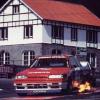Unique Autosports Rb25det Exhaust Manifold
Announcements
-
Similar Content
-
Latest Posts
-
By GabsReDeal · Posted
Yes shipping here can be a pain, was about to purchase timing belt replacement kit, but it tends to get expensive due to shipping (and customs if importing from non-EU which the UK now falls under). -
By Murray_Calavera · Posted
Nah, shouldn't have made any difference. Reds on, or car running, should be same same for what you were doing. -
Should be able to source 200 cell R32 cat... unsure how easy it would be to get it to Malta though.








Recommended Posts
Create an account or sign in to comment
You need to be a member in order to leave a comment
Create an account
Sign up for a new account in our community. It's easy!
Register a new accountSign in
Already have an account? Sign in here.
Sign In Now